A lot of dog owners find themselves asking if letting their pup splash around in a chlorine pool could mess with their pet’s skin or fur.
Chlorine can strip away the natural oils in a dog’s coat, leaving the fur dry and dull, and may sometimes cause mild skin irritation.
For dogs with darker fur, pool water might even bleach the coat a bit, while lighter coats could pick up a greenish tint if they swim a lot.
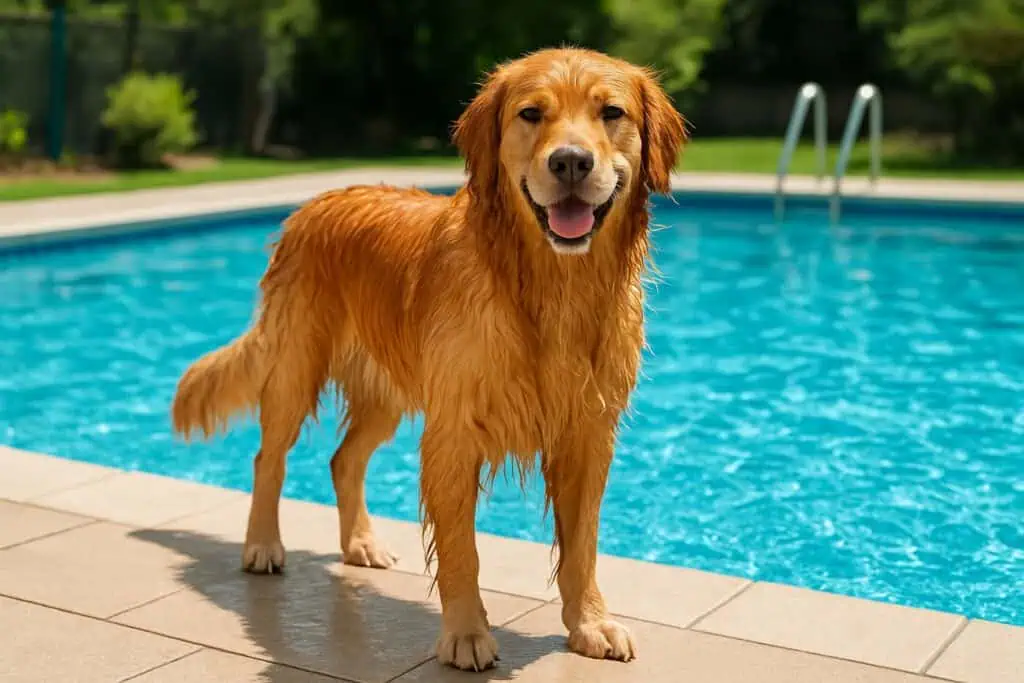
Most dogs do just fine in well-kept pools, but you’ll want to keep an eye out for dryness or irritation. Pool chemicals sometimes bother a dog’s skin or eyes, but with the right care before and after a swim, you can help keep your dog’s coat and skin in good shape.
Honestly, most people just want to enjoy the pool with their dogs without any drama.
How Chlorine Pools Can Affect a Dog’s Skin
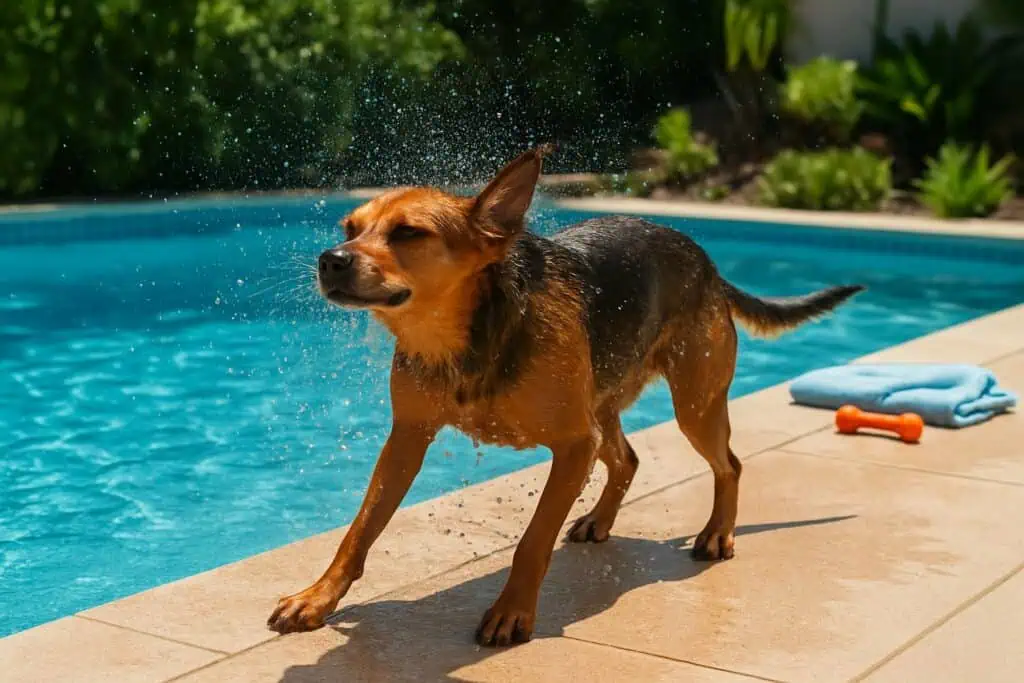
Swimming in a chlorine pool can affect every dog a little differently. How long your dog spends in the water and what kind of skin they have will play a big part in what you notice afterward.
Irritation and Dryness
Chlorine’s a strong chemical, it keeps pools clean for humans, but it can be tough on dogs.
After swimming in chlorinated water, many dogs get dry or mildly irritated skin. Chlorine strips away those natural oils that protect your dog’s skin and coat and keep it in good condition.
Signs of irritation or dryness:
- Itching and scratching
- Flaky or scaly skin
- Dull, brittle fur
Some pups are just more sensitive and might get red or sore spots sooner than others. Rinsing off with fresh water after a swim really helps remove chlorine and can make a noticeable difference.
Allergic Reactions
A handful of dogs are allergic to chlorine or other pool chemicals. These reactions are usually more dramatic than just simple dryness.
Possible signs of an allergic response:
- Red or swollen skin
- Hives or rashes
- Excessive licking or chewing at the skin
Sometimes these allergies show up after just one swim, other times it takes a few dips. If you see these symptoms, it’s best to keep your dog out of the pool and check with your vet.
Hot Spots and Skin Infections
Dry or irritated skin makes it easier for dogs to get hot spots or skin infections. Hot spots are those nasty, red, wet patches dogs create by licking or biting at an area.
Bacteria can sneak in through broken or damaged skin, especially if chlorine has already stripped away the skin’s protective layer.
Dogs with thick or long coats are at higher risk since moisture sticks around near the skin. Drying your dog off well and checking for any trouble spots after swimming can help keep hot spots or infections at bay.
Impact of Chlorinated Pools on a Dog’s Coat
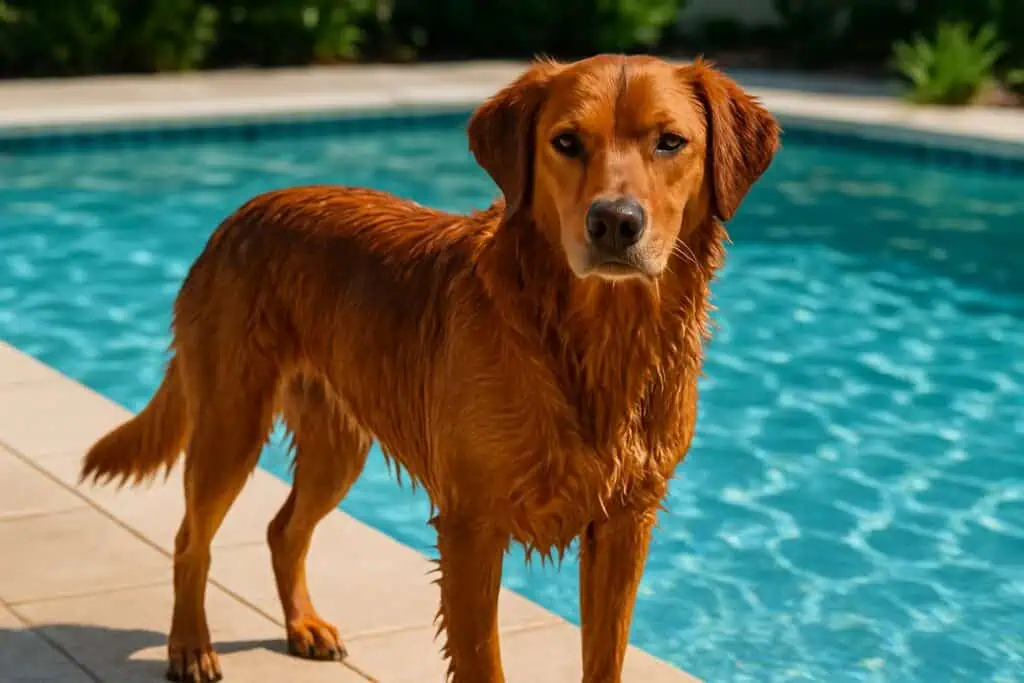
Dogs that swim in chlorinated pools might notice some changes in their coats due to side effects. Pool chemicals can dry out fur, mess with color, and leave a weird residue you can sometimes feel or see.
Changes in Coat Texture
Chlorinated water takes away the natural oils in your dog’s coat. Those same oils that keep fur soft, healthy, and shiny. Without them, fur gets dry, rough, and sometimes even brittle.
You might notice:
- Dry, stiff fur
- Itchiness when touched
- Broken or split hair strands
Some dogs handle swimming better if their skin and coat are healthy to begin with. Breeds with longer or thicker hair often see more obvious effects, especially if they swim a lot. Rinsing your dog with clean water after a swim really does help.
Color Fading and Dullness
Chlorine can cause slight bleaching of your dog’s coat over time because the chemical breaks down pigments, especially in darker fur. Sometimes, light-colored fur even goes a little yellow or green thanks to chlorine.
You might spot:
- Darker fur getting lighter or bleached
- Lighter fur looking discolored
- Coat losing its natural shine
The higher the amount of time your dog swims in the pool, the more likely you’ll notice these changes.
Residue and Build-Up
Pool chemicals sometimes leave a sticky or powdery residue on your dog’s fur, especially if the pool’s chemical levels run a bit high. Over time, this build-up makes the coat look dull and kind of dirty, even after it’s dry.
Dogs with residue might also have that “pool smell” linger. The build-up can trap dirt and allergens, making the fur look and feel less healthy. Giving your dog a quick rinse or wash after swimming helps get rid of leftover chemicals.
Brushing and bathing regularly keeps the coat in better shape and helps your dog feel more comfortable. If your dog’s a frequent swimmer, it’s a good idea to check the pool’s chlorine and pH levels to help cut down on residue.
Best Practices for Dog Owners

Dogs love swimming, but their skin and coats need some TLC. By paying attention and following a few tips, you can help avoid most chlorine-related problems.
Supervising Every Dog Swim
Always keep an eye on your dog in the pool, especially in the summer. It’s the best way to prevent accidents like drowning or gulping too much pool water. Not every dog’s a natural swimmer, so some might need a doggy life vest.
Check the pool’s chemical balance before letting your dog in. Pools with high chlorine can irritate sensitive skin or coats. Try to keep swim sessions short so your dog doesn’t soak in chlorine for too long.
Wetting your dog’s coat with clean water before swimming can help reduce how much chlorine gets absorbed. For longer-haired breeds, brushing before and after a swim helps keep tangles and mats away.
Bathing Routines After Swimming
Rinse your dog’s coat with fresh water right after each swim. That washes off chlorine and other pool chemicals. If you want to go the extra mile, a dog-safe conditioner before and after swimming can help prevent dryness.
Bathe your dog with a mild, dog-safe shampoo every so often, but don’t overdo it—too much washing strips away those good oils. Towel your dog off thoroughly after a bath, and make sure their ears are dry to cut down on infection risk.
Look for any redness, itching, or dryness on your dog’s skin and talk to your vet if you spot problems. A little care after swimming keeps your dog’s coat looking and feeling great.
Water Quality in Pools: What Matters for Dogs
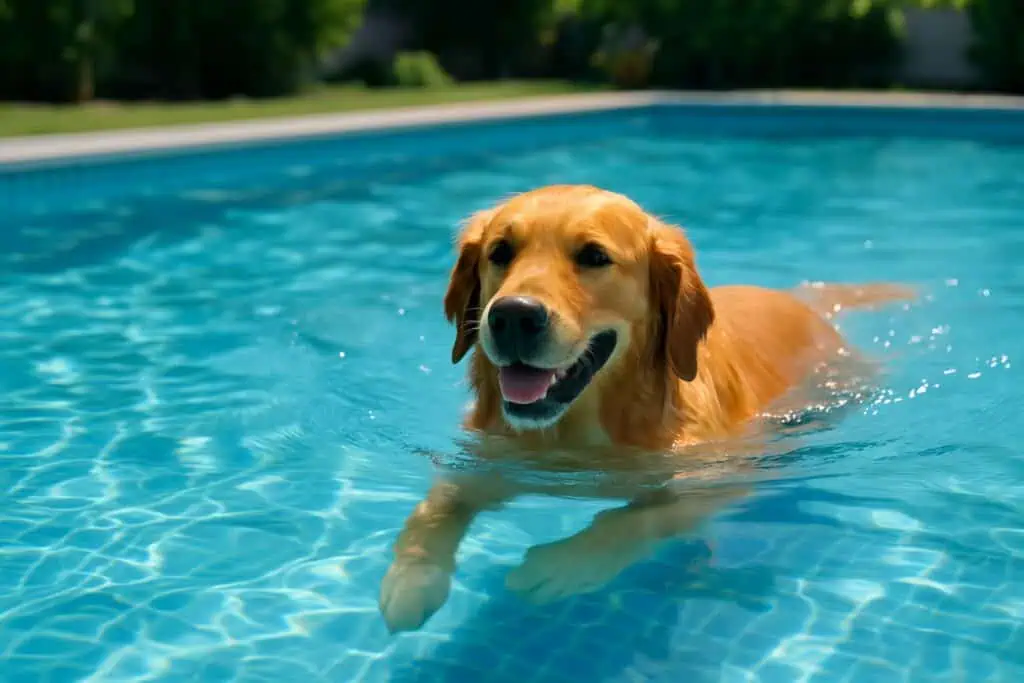
Good water quality matters if your dog’s going to swim. The right chemical balance protects their skin and coat, and keeping bacteria and algae under control lowers health risks.
Chlorine Levels and Pool Chemicals
Chlorine keeps most pools safe by killing bacteria, but too much can irritate your dog’s eyes, skin, and nose. Dogs who swim a lot might end up with dry, itchy skin or a dull coat since chlorine strips away those natural oils.
For dogs, stick to the same chlorine levels as humans—1.0 to 3.0 parts per million (ppm). Above 3.0 ppm, irritation risks go up. Always check chlorine levels before letting your dog swim, and rinse their coat with unclorinated water afterwards to get rid of residue.
Algae Growth and Microorganisms, perhaps from a hsoe,
If you don’t keep up with pool maintenance, algae and bacteria can take over. These can cause skin irritation, hot spots, or even infections in dogs. Algae also make pool surfaces slippery, which isn’t great for your dog’s paws.
If you see green or cloudy patches, the water’s not safe for anyone. Test your water often and run the filters every day to keep things under control. Using pool-safe algaecides and cleaning pool surfaces regularly helps maintain a healthy swimming spot for your dog.
Alternatives to Chlorinated Pools for Dogs
There are other ways for dogs to enjoy the water without all the chlorine hassle. Some options use gentler chemicals and are easier on your dog’s skin and coat. Each has its own quirks, maintenance needs, and perks.
Saltwater Pools
Saltwater pools use salt to generate chlorine, but at much lower levels than typical pools. The water feels softer and is usually less harsh on your dog’s skin and coat. Lots of dogs seem to prefer saltwater—it’s gentler and less likely to dry out fur or cause irritation.
Saltwater pool maintenance is a little different. You’ll need to check salt and chlorine levels with a test kit, and the water still needs regular filtering and cleaning to stay safe for dog swimming.
Table: Saltwater vs. Chlorine Pools for Dogs
| Feature | Saltwater Pool | Chlorine Pool |
|---|---|---|
| Chlorine Level | Lower | Higher |
| Smell | Milder | Stronger |
| Skin Comfort | Gentler | May cause dryness |
| Maintenance | Needs salt cell | Uses chlorine only |
Honestly, a lot of dog owners like saltwater pools because they don’t have that heavy chlorine smell.
Dog-Friendly Water Features
Dog-friendly water features give pups an easy, fun way to cool off and play—no need for deep water or swimming skills. Think shallow splash pads, sprinklers, wading pools, or even those custom dog pools you sometimes see online. They’re perfect if your dog’s on the smaller side or just not much of a swimmer.
You can toss a splash pad or a sprinkler out in the yard pretty quickly. They’re simple to rinse off, and you don’t have to mess around with chemicals or complicated upkeep. Wading pools work too—just fill them up with fresh water, let your dog go wild, and dump them out when you’re done.
If you want something sturdier, there are dog pools made from thick plastic or rubber. They come in a bunch of sizes and don’t get torn up by sharp nails as easily. Plus, they’re portable and super easy to refill. Honestly, it’s a hassle-free way to let your dog splash around without the whole chlorine pool drama.

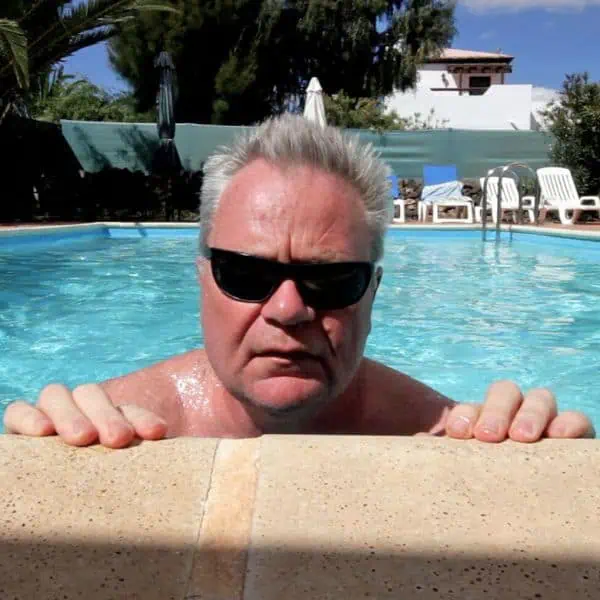


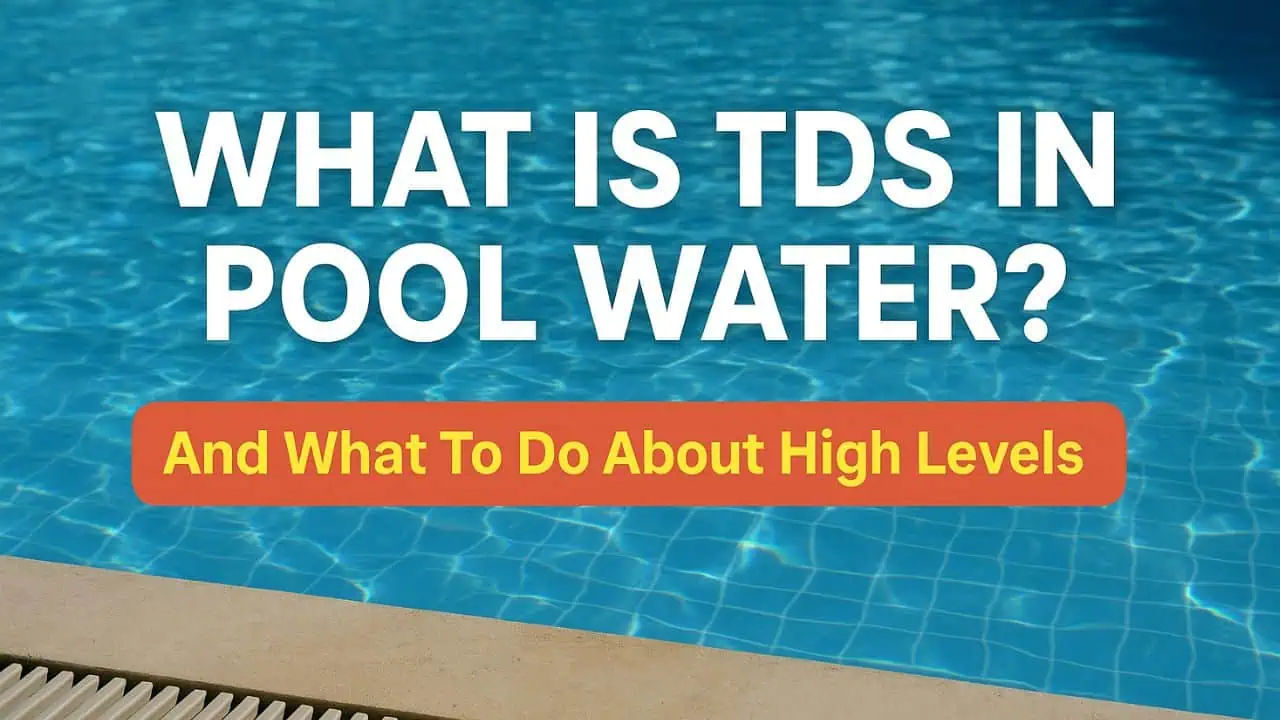
Leave a Reply